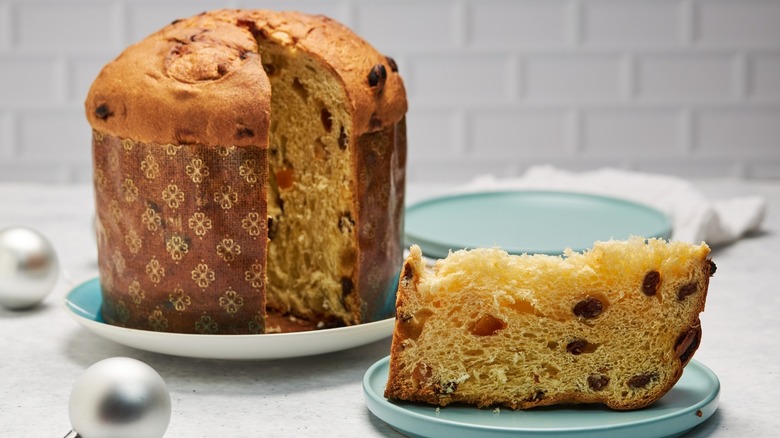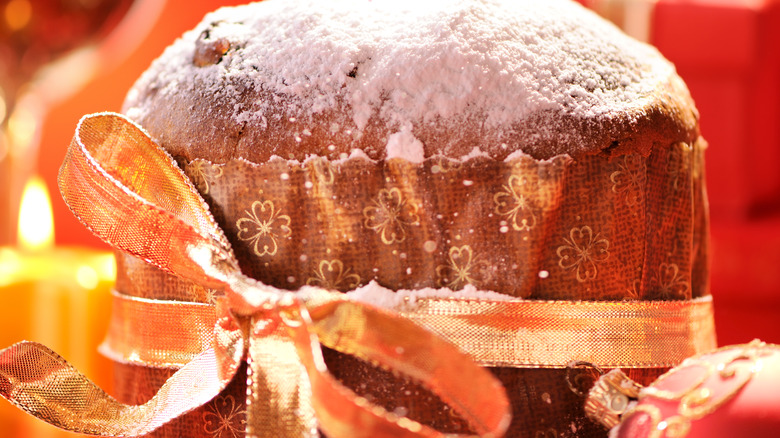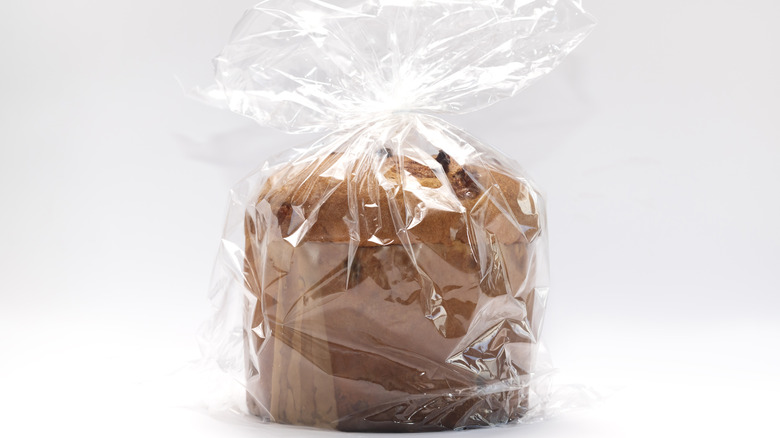Panettone Shouldn't Only Be A Holiday Bread
It's hard to think of bread more synonymous with Christmas time as panettone. Not only is it popular in places like the United States and Italy but panettone can be found during the holidays worldwide thanks to Italian immigrants who have settled in countries around the globe. Over time, panettone's appearance on supermarket shelves became a sign that the holiday season was here. For better or worse, the flavors and textures of panettone have settled into something very unremarkable as it has people have gradually reduced it to a Christmas treat idea.
Has that commoditization stifled panettone's potential to be something better, though? Is it time to wrest it away from the grip of Christmas and make panettone something we eat year-round? The answer — it can be argued — is most certainly yes.
To be clear, bad panettone should definitely remain a holiday bread. Great panettone, on the other hand, transcends tradition and belongs in the same category of everyday desserts like cake, ice cream, and pie. When you really break down what panettone is, it's not hard to see why. This domed bread is leavened like donuts, enriched like brioche, and can be made with all kinds of fillings like cookies ranging from chocolate chips to candied fruit. It can be as gigantic as a cake, as complex as a patisserie, and as craveable as anything. So how did it become the stock gift you give to a dinner party host during the holidays?
What is authentic panettone and where do you get it?
Panettone has a mythological origin in Italy. What's known for sure is that the bread originated in Milan, but depending on who you ask you might get a different story as to how. The one that seems most likely, given its relation to Christmas, is that it was stumbled upon by a Milanese cook in the 15th century when his head chef burned a dessert intended for local nobility at a Christmas banquet. The crafty young cook, named Toni, instead made a bread-like dessert filled with citrus and raisins that was so well-received by the nobility that they honored the cook by calling it "Pan del Toni" — eventually morphing into the holiday bread known as "panettone" today.
For those who can't make it to Italy or any reputable shops selling authentic panettone, there are now a lot of options online. Panettone has experienced a boom in the past half-decade or so, as services like Goldbelly have provided viable ways of transporting foods that travel well. For something that's not only from Italy, but available year-round, try ordering a classic panettone by Olivieri 1882. To taste a slightly modern twist on panettone that's also available year-round, try a loaf by California-based baker Roy Shvartzapel. And when you have one of these amazing treats delivered to you, bring it to your next dinner party or celebration meal and watch people's disbelief when they realize what they're eating.
How best to enjoy panettone year-round
Craft-made versions of panettone are springy on the inside, have a sugary crust on the outside, and aren't overly sweet or bland unlike many of their mass-produced counterparts. When eating a sublime loaf of this bread, it's easy to say that it needs little more than a glass of milk or a cup of hot chocolate to wash it down with. However, there are many different ways you can enjoy panettone no matter what time of year it is. A classic way is to warm the bread in the oven, slice it like a cake, and serve it on a plate with fresh double cream drizzled on top. This is a simple post-dinner dessert that's great for kids. It's also great for adults when paired with a glass of marsala wine.
Since it has brioche-like characteristics, it would also work perfectly as souped-up French toast. Slice a slightly aged panettone how you like, dip it in simple egg wash, and fry it in a pan with butter. Some panettones can also taste incredible with savory pairings, as long as your loaf doesn't contain too many sweet additions like candied fruit, to begin with. Try toasting some slices of panettone with cheese and Italian ham on top, both of which would make the dish reminiscent of a Monte Cristo due to the inherent sweetness of the bread. No matter how you decide to eat it, though, enjoy it with others to spread the panettone gospel.


